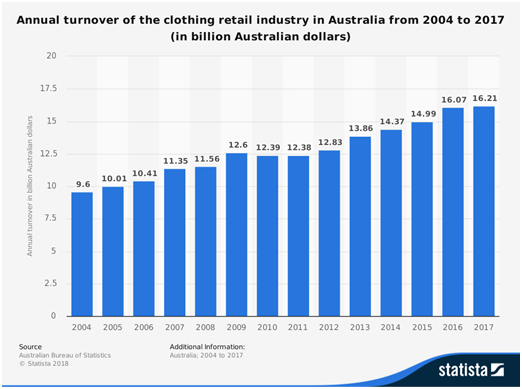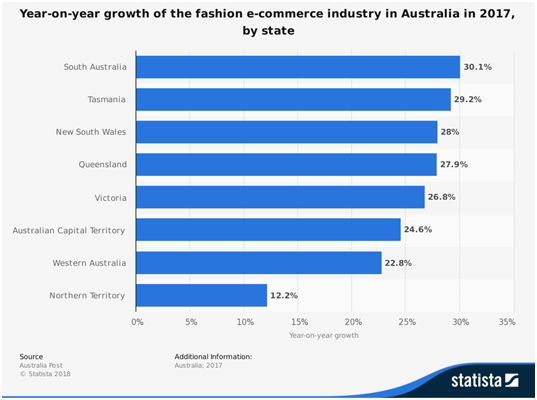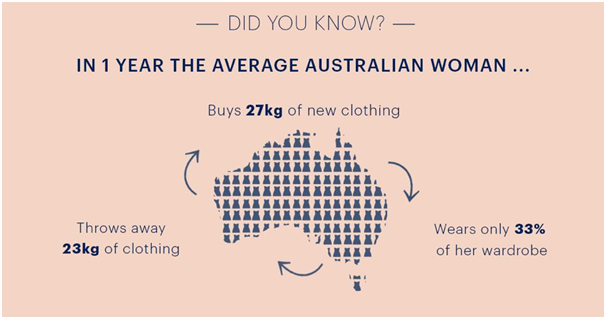International Marketing Assignment: Business Expansion Of Uniqlo In Australian Market
Question
Task:
International Marketing AssignmentInstructions
You will be required to:
1. Select the preferred market. This will be based on the case study from assessment one. As a working group you will choose the market that they feel provides the best level of opportunity for their product category in particular fashion, active wear/sportswear.
2. Before you commence writing your marketing plan in step 3, you will need to undertake secondary research and use statistical analysis of both Australian and international market data to identify trends and developments. Things to consider includes:
- The market and why that particular market was chosen
- One primary and two secondary objectives
- At least three benefits of targeting that market
- Any cultural impacts and applications for reaching this specific target market.
- Any implications targeting this market would have domestically, consider include brand reputation, communication barriers/meanings and relevance
- Measures of central tendency to determine correlations between data sets
- Any statistical relevance of trend patterns and impact on the success of that market
- A competitor analysis and review from their data sets that clarifies the size of the market for your chosen product
- A comparative analysis for your chosen market
Answer
Introduction
The Australian fashion market is rising and has great potential. From an international marketing perspective and specifically in the fashion industry sector, Asian, South East Asian and Australian markets are the targets of global brands. Among the global brands of fashion, Uniqlo is a Japanese joint apparel company that has an excellent presence in the international market. The objective of this assignment is to comprehend the analysis and marketing strategies of the Uniqlo international market and specifically to the Australian market. The paper is meant to present the abilities and capacity of Uniqlo as an international brand and what are the ingredients that are highly suitable for the Australian fashion market.
About Market and Company
For this assignment, we have taken a global supplier company that is Uniqlo. This company is a fast - fashion giant and one of the largest apparel companies in Japan based on net sales. The company entered the Australian market in 2013 which began the journey of typing in the attractive and high potential market of Australia. The Japanese April joint found the Australian market to be quite interesting and the people of Australia quite easily loved Japanese fashion. The Australian fashion market is considered to be casual and informal, to which the Japanese apparel company is quite intimidating. The assignment will comprehend the elements which are decisive for Japanese companies to trade and conduct business in Australia. Australia is already a multicultural society and it is quite possible that there are some elements that will cause a setback for Uniqlo. The biggest benefit of the Australian fashion market is that it is growing adversely because the country is considered one of the most urbanised countries in the world. Despite the fact that the country is quite oriented towards urban culture, two iconic styles in Australian fashion brands are swimwear and bush fashion. The swimwear is basically the most chosen attribute and has taken in modifications for casual and outdoors (Su, 2020).
International Foreign Market
Target Market
The target market for this company is Australia.The market is driven by two major fashion styles that are surf wear and bush fashion. They both have driven Australia's informal and casual fashion market and expanded substantially to everyday fashion. The Japanese brand has to comprehend this and modify the products in accordance with the demands and trends followed in the country.
Objectives
The primary objective of Uniqlo is to make its place in the market and compete among the Australian local brands that are already quite popular. The secondary objective is to seek the attributes and elements from the perspective of the Australian market that can be utilized to effectively grasp good control over the market. Uniqlo is a typical Japanese brand that needs to consider beyond its own fashion (Loureiro, Miguéis and da Silva, 2018).
Regulations
The legal requirement for Japanese fashion companies in the Australian market is quite formidable and substantially considerable. The Australian and New Zealand markets have specific regulations for use of chemicals and heavy metals in production. Some of the banned chemicals are asbestos, polychlorinated biphenyls, azo dyes, formaldehyde, etc. There is a bit of relief regarding the strictness of the regulations which is not as much as European Union countries or the United States. In Australia, April labelling is extremely important which must give information about fiber composition, placement, sizes, care instructions, country of origin, non-compliance penalties, etc. At the same time, there are specific regulations for children's clothing too such as flammability and textile testing. The regulations and legal departments of the country are evaluated by the Australian Competition and Consumer Commission.
4Ps
Uniqlo marketing strategy (4Ps) is quite oriented towards specific product strategies and pricing strategies. The company's product strategy is to provide high-quality casual clothing with a wide product portfolio to all age groups and genders. The products are meant to provide a unique modern look and target the youth population. The products have an element of defining for occasional wear. The pricing strategy of Uniqlo is to keep the product in the range of $25 to $100. The company already keeps itself in a unique position by simple designs in bright colors. They are intended to provide excellent quality products at a very budget price. Companies place and distribution strategy are to place their product in major cities across Australia. The primary operates through websites and has outlets at various places. The company employs a statistical analyst to comprehend the customer purchase data and design advertising strategies based on the preferences of the customers (Alexander, Nobbs and Varley, 2018).
Buying Analysis
Buying trend in Japan is basically much oriented with the supply side and there is immense segmentation influence of international products. Sports apparel is gaining interest in the market where people are looking forward to comfort and agility while doing physical movements. The world is already aware of obesity and health concerns are on the rise. In such a case, lots of people in Japan are looking for sports or fitness activities.
Opportunities
Australia is an urbanized market which is quite an influential place for our fashion industry. The biggest opportunity for Uniqlo in Australia is that the existing fashion companies in Australia are quite expensive. This means that the product line of Uniqlo based on effective pricing strategies will be highly influential and easily attainable in the Australian market. On the other hand, Japanese culture and fashion trends are supposedly found in alignment with the Australian fashion industry. The company has an excellent marketing team that conducts an analysis of the target market and suggests specific attributes which could satisfy the needs and wants of the customers.
PESTLE Analysis
Political
The political environment in Australia is quite favourable for fashion industries as they support every company that intends to trade in Australia. This is evident from there are modifications and redefining the structures of tariff barriers and import duties. There is a certain level of influence based on the relations between Australia and Japan (Payne, 2020).
Economy
Australia is one such country that has immense economic potential. They have highly organized people in most of their parts quite interested in consumerism and purchasing products. They prefer explicit and exotic products and they are highly fashionable. The Australians are quite conscious about their standard of living and a strong dollar position has placed them in a profitable position.
Social
From a sociological perspective, Australians are quite intrusive about fashion industries and trending markets. This means that they are likely to look up new trends of fashion in the market. They prefer decent and bright-coloured clothes and are completely fine to pay the necessary amount for it.
Technological
The technological advancement in the country has provided an opportunity for Uniqlo to interact with customers in multiple ways. The company has employed website social media platforms to interact with consumers and place themselves among the youth population.
Environment
From an environmental perspective, the country is quite conscious about the use of chemicals or hazardous substances which is not acceptable in fashion brands. The company e is also focusing on developing sustainable and environmentally friendly products. The process of stores online provides an opportunity for every individual to look up different kinds of products and get them.
Legal
From the legal perspective, there are certain regulations placed in the country against chemical usage in the production of clothes. This is administered by ACCC and evaluated on a regular basis (Islam, 2019).
SWOT Analysis
Strength
The company's biggest strength is its fused E-Commerce and physical stores. They are one of the largest manufacturers and retailers of private brands which operate globally. This gives them an opportunity of providing an extensive line of products in any target market. They have consistently improved their performance and growth globally. They are quite influential in harbouring stronghold potential and achieving record-breaking results. The company has an excellent mechanism for implementing supply chains in the transformation to improve efficiency in the target market. The employees of the company are highly dedicated to innovation and focused on the requirements decided by the market.
Weakness
The biggest setback or the attribute which has placed the company in the position of jeopardy is the labour abuse at supplier factories. The company has faced several lawsuits regarding ethical clauses.
Opportunities
The company has immense opportunities in the Australian market because of their high potential for the global economy. The country has developed an environment and population sufficient enough to tap more consumer products. The company is expecting huge growth in the fashion apparel market in Australia itself because every day new fashion trends are arising. The company is intended to bring sustainable and highly efficient products to the Australian market (Neil, Bishop and Simpson, 2017).
Threat
The biggest threat to companies in Australia is high competition. The company is quite specific about pricing strategy but the Australian people are not much concerned about value for money, in particular, they have an orientation towards the brand and its products. The company has faced a huge setback due to covid-19.
Data Interpretation
The global fashion industry has risen from 549.5 billion dollars in 2022 to 668.1 billion dollars in 2021 which is a steep rise of 21.6 %. The sudden level of rising is the result of resuming operations in the fashion industry after the pandemic. It is believed that the global size of the fashion market is expected to attain a level of 1207.23 billion dollars by 2025. The chart given below is about the annual turnover of the retail industry in clothes from 2004 to 2017 in Australia. One can witness the steady rise in the years. The importance of this chart is that if we consider the pandemic situation which has given birth to an abnormal chart and apart from that the normal rate is this (Fiber, 2019).

In the chart given below, statistical representation of year – on - year growth of the fashion industry in the states of Australia. This provides any information regarding the target marketing by any company that wants to place itself in a competitive domain.

The statistics are given below showcase the level of replenishment opportunity that Australian women provide for the fashion company. This can be comprehended quite well while making strategies for Australian people.

Conclusion
The objective of this assignment was to comprehend the evolution of designs and analyze their modernization with the demanding standards of the young population in Australia. The company has earned a substantial reputation for their corporate social responsibility and sustainable business model. There is a significant difference in fast fashion and clothing retailing in the fashion industry of Australia. The leading company in clothing retailing is Woolworths whereas fast fashion is Cotton on Clothing Pty Ltd. Uniqlo has already placed itself in the third position among the fast fashion in Australia. The assignment has successfully represented the working and business operations of Uniqlo in Australia.
References
Su, Y.Z., 2020. The Internationalization Strategies of Fast Fashion Clothing Retailer Brands: A Cases Study of ZARA, H&M, UNIQLO, and Gap. https://c030.wzu.edu.tw/datas/upload/files/2020%E7%95%A2%E6%A5%AD%E7%94%9F%E8%
AB%96%E6%96%87/108GP_1105209030_%E8%98%87%E7%BE%BD%E7%94%84.pdf
Loureiro, A.L., Miguéis, V.L. and da Silva, L.F., 2018. Exploring the use of deep neural networks for sales forecasting in fashion retail. Decision Support Systems, 114, pp.81-93. https://www.sciencedirect.com/science/article/abs/pii/S0167923618301398
Alexander, B., Nobbs, K. and Varley, R., 2018. The growing permanence of pop-up outlets within the international location strategies of fashion retailers. International Journal of Retail & Distribution Management. https://www.emerald.com/insight/content/doi/10.1108/ijrdm-09-2017-0217/full/html Payne, A., 2020. Speed as Distance over Time: Reframing fast and slow fashion in Australia. International marketing assignmentSlowness in Fashion, pp.110-125. https://eprints.qut.edu.au/200532/
Islam, S., 2019. Fashion Entrepreneurship, School of Fashion and Textiles, RMIT University, Melbourne, Victoria, Australia. Sustainable Technologies for Fashion and Textiles, p.343. https://books.google.co.in/bookshl=en&lr=&id=Z8i2DwAAQBAJ&oi=fnd&pg=PA343&dq=Fashion+ Industry+in+Australia&ots=PNU2zjKYok&sig=EUBZ6LXpmCuW0Tq2pEMdj1F9j3A&redir_esc=y#v =onepage&q=Fashion%20Industry%20in%20Australia&f=false
Neil, C., Bishop, E. and Simpson, K., 2017. Redefining ‘Made in Australia’: A ‘fair go’for people and planet. In Sustainability in Fashion and Textiles (pp. 195-206). Routledge. https://www.taylorfrancis.com/chapters/edit/10.4324/9781351277600-13/redefining-made-australia-cameron-neil-eloise-bishop-kirsten-simpson Fiber, R., 2019. SUSTAINABLE FASHION IN AUSTRALIA. Global Perspectives on Sustainable Fashion, p.180. https://books.google.co.in/bookshl=en&lr=&id=dq13DwAAQBAJ&oi=fnd&pg=PA180&dq=Fashion+ Industry+in+Australia&ots=BwjOxwfs8Y&sig=FYucFqjmtmRAA7IRSzbxNYxi4wQ&redir_esc=y#v= onepage&q=Fashion%20Industry%20in%20Australia&f=false












